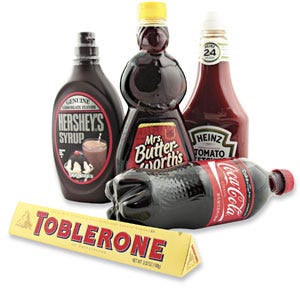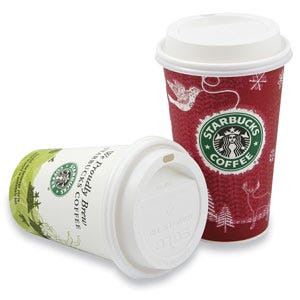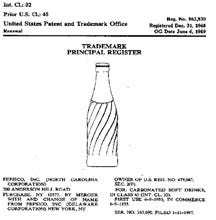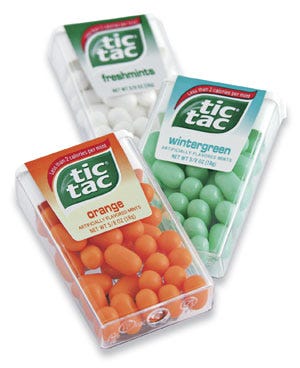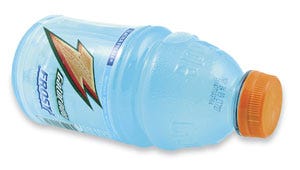March 11, 2015
|
Product packaging has the potential to do much more than its primary function—it can actually speak to consumers. Along with traditional beneficial features, such as mechanical strength and user friendliness, packaging design features can deliver a visual message leading to consumer recognition, or “secondary meaning,” for the product and its source. This silent voice of package design, essentially a promotion of the “tradedress” of the package, may become a significant asset for market entrenchment and product valuation.
As consumers walk the aisles of grocery stores, flip through advertisements or even sit in a movie theater, each is inundated with visual cues from packaging that are meant to communicate. Along with traditional messages of trademarks and taglines that deliver recognizable stimulus, packaging design features add to the seemingly constant stream of noisy, yet silent chatter for the subconscious. Different shapes and colors of containers are recognized. Our minds make numerous associations as to what is known about a product or the company that offers the product.
Consistent, purposeful use
|
Just as any language is learned by association, tradedress rights are based on learned association derived from consistency of design features in the market (“use in commerce”). As with any trademark right, use of the tradedress in the market is necessary for rights to develop. Unlike other forms of intellectual property rights where exclusivity rights may flow from the moment of creation, or the moment of filing of a document with the Patent or Copyright Offices, trademark rights require at least some level of secondary meaning in the market. Further, tradedress rights are more often realized with consistent, long-standing use.
Although some trademark rights are based upon something that is said to be “inherently distinctive,” it is widely understood that the shape or design of a product or its packaging will not enjoy the status of being inherently distinctive, and instead must derive distinctiveness by consistent and distinguishable use in the market. Examples of such tradedress rights for a product package may include Gatorade® bottles, Tic Tac® dispensers and the shape of a Toblerone® candy bar's package.
Plan for developing rights
|
While filing a trademark document, such as the paper filed with the U.S Patent and Trademark office by PepsiCoabove, is important, trademark rights also require the creation of a second meaning in the product's market. |
As with traditional trademarks, it is possible to obtain a federal trademark registration for a particular configuration of a design that is responsible for consumer recognition. This is especially true for packaging design features that have been in use in the market for an extended period of time, such that the features are distinct and recognized in the market. For example, Solo Cup Co. has obtained a product-configuration trademark registration for the shape of its popular coffee cup lid used at Starbuck's® and other places.
To get to the point of obtaining a threshold level of consumer “secondary meaning,” a few key tactics may be employed.
One such strategy involves the use of design patents when the packaging design is first introduced. Design patents, used to protect the aesthetic appearance of the package features, afford the owner 14 years of exclusivity of the patented design. Unlike utility patents that cover functional attributes, design patents cover the look of the package design. Such nonfunctional, aesthetic aspects are exactly the same sort of features that may be recognized as the tradedress.
Another tool for pushing potential tradedress is by advertisement. For example, advertising campaigns were very important to Owens Corning when it was obtaining tradedress status of the color pink for its fiberglass insulation. Similarly, an advertising campaign such as, “look for our [fill in the blank] shape with a [color] cap,” may be as effective at promoting the look of the packaging as a tradedress.
Yet another tool for pushing tradedress is commonality of the design features across an entire product line, or expanded use of the design for related product lines. A sports drink, for example, having the same bottle-design features in a single serving as those used in a bulk size, may be effective for tradedress rights to be recognized.
Avoid pitfalls
|
Beyond utilization of tools to secure tradedress rights, some potential pitfalls remain that could jeopardize such rights, depending upon the precise market arena and the type of product at hand. Generally, three common factual scenarios results in such a risk.
1. Lack of consistency. Consistency of use is achieved by incorporating the design features across a product line, including the features in different size packaging, and displaying the design features in advertisements and promotions.
2. “Functional” claims in advertisement or promotions. Tradedress, being a trademark right, only relates to features that are not primarily functional and instead give an appearance or commercial impression that one may associate with the source or quality of the product. Thus, statements made about the packaging, such as laudatory promotion of the functional features or some purported functional superiority, can lead to questions of whether tradedress rights exist, and may raise a challenge of tradedress rights by competitors.
3. Utility patent protection. Although open for argument in a particular situation, obtaining a utility patent for functional aspects of the package design features may also jeopardize potential tradedress rights. Thus, the scope of utility patent applications should not tread on that which is intended to be preserved as a tradedress product feature.
|
In sum, much of that which jeopardizes tradedress rights may be controlled or managed. Perhaps the greatest risk to successful development of tradedress rights is the possibility that the design features are considered primarily functional and, thus, not capable of being a trademark. Proper planning can minimize such concerns and potentially expedite development of consumer secondary meaning.
Packaging design as a tradedress is a subtle form of marketplace communication that delivers a powerful marketing tool for promoting sales and brand loyalty. It also may lead to the right to exclude competitors from similar designs.
A purposeful approach and a strategic plan may be helpful to devise packaging design features with an eye toward establishing tradedress rights to valuable goodwill for a product line and its company. Care should be taken to harness such tradedress rights and not jeopardize such rights with counterproductive statements in the market.
You May Also Like
